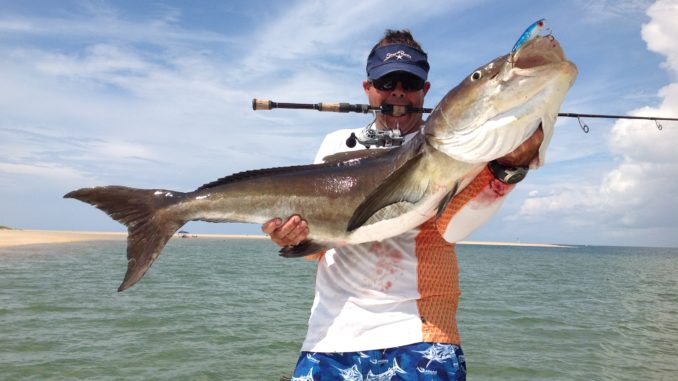
Federal authorities propose closure of cobia season starting June 15
Cobia season in South Carolina waters won’t look the same this year, as state officials deal with federal requirements that the recreational harvest of the popular fish be reduced because last year’s tremendous harvest across the South Atlantic exceeded the annual catch limit by almost a million pounds.
Officials with NOAA fisheries are working with biologists in states north of the Georgia/Florida line to determine exactly how seasons, creel limits and size minimums will have to change because fishermen caught more than 245 percent of last year’s Atlantic Regional catch limit of 630,000 pounds; they caught 1.5 million pounds. June 15 has been discussed as a proposed closing date for all cobia fishing in the affected areas.
Biologists with the S.C. Department of Natural Resources’ marine division had recognized a problem earlier because of declining catches in the southern part of the state, and their proposed management measures should help delay the impending closure.
“We were already in the process of establishing the area from Edisto south to the Georgia state line as the Southern Cobia Management Zone when this overage occurred,” said Mel Bell, director of fisheries management for SCDNR’s marine division. “The issue with declining catches was brought to our attention by the charter captains; they were anxious to do something about it. The declining catches were evident over several years of records, and when we did research, we found this area to hold a distinct population segment that have unique genetic characteristics.
“We requested the (limit in) state waters be reduced to a single cobia per person, with a limit of three per boat,” Bell said “We also found this area to be a primary spawning area for this distinct population segment and requested a full closure while the cobia are spawning during May. The legislation doesn’t prohibit fishing then, but (it) requires all cobia to be immediately released.”
Bell said bills requesting the limit reductions and spawning closure have passed committees in the S.C. House and S.C. Senate with virtually no opposition. The changes will take effect when the bills are combined, passed and signed into law by the governor. Bell said no opposition is expected, and once legislators begin working, it could be completed in a few days.
NOAA Fisheries, the South Atlantic Fisheries Management Council (SAFMC) and state agencies have an understanding that if states adopt measures to reduce their catch, the season could be extended. The daily creel limit in federal waters (more than 3 miles off the beach) will remain at two per day at least through 2016.
Dr. Michelle Duval of North Carolina, chair of the SAFMC, said, “NOAA Fisheries’ hands are tied as far as the closure. The Magnusson-Stevens Act requires the season be closed to prevent another overage, but because the cobia fishery has not been classified as overfished, there will not be a payback measure. That’s a little bit of good news, and there is a little more. If the 2016 catch limit has not been reached when the season closes, they can reopen the season.”
North Carolina approved in late February a reduction of its daily creel limit for cobia from two fish to one and asked the ASFMC to calculate how much a creel reduction and a change in minimum sizes from 32 to either 36 or 40 inches could extend the season.
Georgia follows the federal guidelines of a daily creel limit of two fish; Virginia already has a daily creel limit of one cobia. Expectations are the newly reduced limit in North Carolina and pending reduced limit in the southern third of South Carolina will allow the closure to be delayed, at least for a little while.
The SAFMC first discussed the cobia issue at its December 2015 meeting and asked for directions on how to be proactive.




Be the first to comment